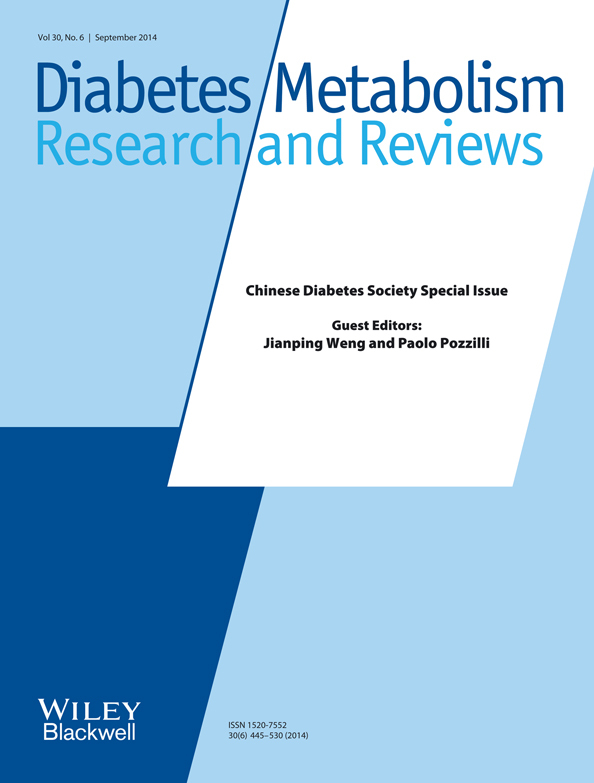Benefits of exenatide on obesity and non-alcoholic fatty liver disease with elevated liver enzymes in patients with type 2 diabetes
Abstract
Background
The purpose of this study was to evaluate the advantages of exenatide treatment on obesity and non-alcoholic fatty liver disease (NAFLD) with elevated liver enzymes in patients with type 2 diabetes (T2D).
Methods
A total of 60 newly diagnosed patients with obesity, NAFLD with elevated liver enzymes and T2D were included in the study. The patients were randomly divided into two groups. The exenatide treatment group (n = 30) were treated with exenatide and insulin glargine, and the intensive insulin therapy group (n = 30) were treated with insulin aspart and insulin glargine for 12 weeks. Selected clinical characteristics were determined, and ultrasonography was performed at both baseline and 12 weeks following treatment.
Results
At baseline, the clinical characteristics were matched between the two groups. After 12 weeks, fasting blood glucose (FBG), postprandial blood glucose (PBG), glycosylated haemoglobin (HbA1c), total cholesterol (TC), triglyceride (TG) and total bilirubin levels were significantly decreased in the two groups (p < 0.001). Body weight and waist circumference were significantly decreased in the exenatide group but increased in the intensive insulin group (p < 0.001). The levels of alanine aminotransferase (ALT), aspartate aminotransferase (AST) and γ-glutamyl transpeptidase (γGGT) in the exenatide group were significantly lower than in the intensive insulin group (p < 0.001). The mean body weight change correlated with the levels of ALT, AST and γGGT change (ALT, r = 0.761; AST, r = 0.733; γGGT, r = 0.752; p < 0.001). Moreover, the reversal rate of fatty liver was significantly higher in the exenatide group (93.3%) than the intensive insulin group (66.7%) (p < 0.01).
Conclusions
Exenatide has a better hepatic–protective effect than intensive insulin therapy and perhaps represents a unique option for adjunctive therapy for patients with obesity, non-alcoholic fatty liver disease with elevated liver enzymes and T2D. Copyright © 2014 John Wiley & Sons, Ltd.




